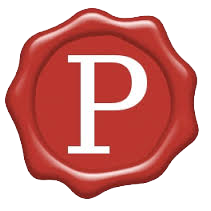| When preparing your advertisement, you should first define your product's Unique Selling Proposition (USP). |
جب اپنا اشتہار تیار کر رہے ہوں تو آپ کو چاہیئے کہ پہلے اپنی پراڈکٹ کی منفرد فروخت کی خاصیت (یو ایس پی) کو واضح کریں۔
|
| To find the USP, ask yourself "How is this product different?" |
یو ایس پی تلاش کرنے کے لئے، خود سے پوچھیں کہ "یہ پراڈکٹ کیسے مختلف ہے؟"
|
| Make a list of your product's pros and cons. |
اپنی پراڈکٹ کے امتیازات اور خصوصیات کی فہرست مرتب کریں۔
|
| This will help you think about what message you want your ad to send. |
اس سے آپ کو یہ سوچنے میں مدد ملے گی کہ آپ اپنے اشتہار میں کیا پیغام دینا چاہتے ہیں۔
|
| Positioning is an attempt to place a product into a certain category in consumers' minds: "the best", for example (best deodorant, best soda, etc.) ("The best" is, however, extremely difficult to establish for a new brand). |
پوزیشننگ پراڈکٹ کو صارفین کے ذہنوں میں ایک مخصوص زمرہ میں رکھنے کی ایک کاوش ہے: "بہترین"، جیسے کہ ( بہترین ڈی اوڈرینٹ، بہترین سوڈا، وغیرہ) ("بہترین" تاہم کسی نئے برانڈ کے لئے مختص کرنا نہایت مشکل ہے)۔
|
| Types of positioning are Against (eg, Hertz vs. Avis, 7-up vs. colas), Niche (a sub-division of a category), New, and Traditional. |
پوزیشننگ کی اقسام (جیسے کہ، ہرٹز بمقابلہ اے وز، سیون اپ بمقابلہ کولا)، نئی اور روائتی نیش( ایک طرح کی سب ڈویژن)، کے برخلاف ہیں۔
|
| A Brand Character Statement sets the tone for an entire campaign. |
ایک برانڈ کی خصوصیات کو بیان کرنا ایک ساری مہم سر کرنے کے مترادف ہے
|
| A simple way to start preparing your advertisement is with this statement: "Advertising will ____A_____ ____B_____ that ____C_____ is ____D_____. Support will be ____E_____. Tone will be ____F_____." where A is a verb, B is a target demographic (such as, "girls between 14-18 years old"), C is your product, D is an adjective or phrase. |
اپنے اشتہار کی تیاری شروع کرنے کا ایک سادہ طریقہ اس طرح کا بیان ہے: "اشتہار ہو گا______ الف_______ ______ ب _________کہ _________ پ__________ ہے _________ ت۔ حمایت ہو گی _________ ٹ____________۔ لہجہ ہو گا _________ث_______۔ جبکہ یہاں الف ایک فعل ہے، ب ایک شماریاتی ہدف ہے (جیسے کہ "14 تا 18 سال عمر کی لڑکیاں")، پ آپ کی پراڈکٹ ہے، ت صفت کا نام یا جملہ ہے۔
|
| E is what the meat of your ad will be. |
ٹ آپ کے اشتہار کا مغز ہو گا۔
|
| F is your ad's "attitude". |
ث آپ کے اشتہار کا "انداز" ہو گا۔ |
| For example, "Advertising will convince artistic types age 18-35 that Apple computers are hip and cool. Support will be two men discussing Macs and PCs. Tone will be humorous." |
مثال کے طور پر، "تشہیر فنکارانہ اقسام عمر 18-35 کو قائل کرے گی کہ ایپل کمپیوٹر جدید اور اعلیٰ ہیں۔ میک اور پی سی پر دو افراد کا تبادلہ خیال تقویت دے گا۔ انازمزاحیہ ہوگا۔" |
| Part B of this strategy statement is the target audience. |
اس حکمت عملی بیان کا حصہ ب ہدف کردہ ناظرین ہیں۔ |
| Advertisers use many methods to gain information about this group, including demographics, psychographics (how the target thinks), and focus groups. |
مشتہرین اس گروپ کی معلومات حاصل کرنے کے لیے بے شمار طریقے استعمال کرتے ہیں جس میں آبادی، لوگوں کی نفسیات (ہدف کردہ کیسے سوچتے ہیں)، اور فوکس گروپ شامل ہیں۔ |
| Part C is the product itself. |
حصہ پ پراڈکٹ بذات خود ہے۔ |
| Advertisers spend time studying this as well. |
مشتہرین ساتھ ساتھ اس کے مطالعہ پر بھی وقت صرف کرتے ہیں۔ |
| Important questions to ask are "Why would anybody buy this?" "What's the product's advantage?" and "What is the client's image?" |
پوچھے جانے والے اہم سوالات ہیں کہ "کوئی اسے کیوں خریدے گا؟" "پراڈکٹ کا فائدہ کیا ہے؟" اور "گاہک کا امیج کیا ہے؟" |
| The last one is important to consider in order to make sure that your ad doesn't jar with the public perception the company has created for itself. |
آخر والا اہم ہے اس بات کی یقین دہانی کرنے کے لیے کہ آپ کا اشتہار کمپنی کی جانب سے پیدا کردہ رائے عامہ سے مختلف نہ ہو۔ |
| For example, hip or edgy ads probably won't go over well with a company that has a public image of being "conservative" and/or "family friendly." |
مثال کے طور پر، جدید یا تیز اشتہارات کمپنی کے لیے غالباًً بہتر نہیں ہوں گے کہ رائے عامہ "قدامت پسند" اور یا "فیملی دوست" ہو۔ |
